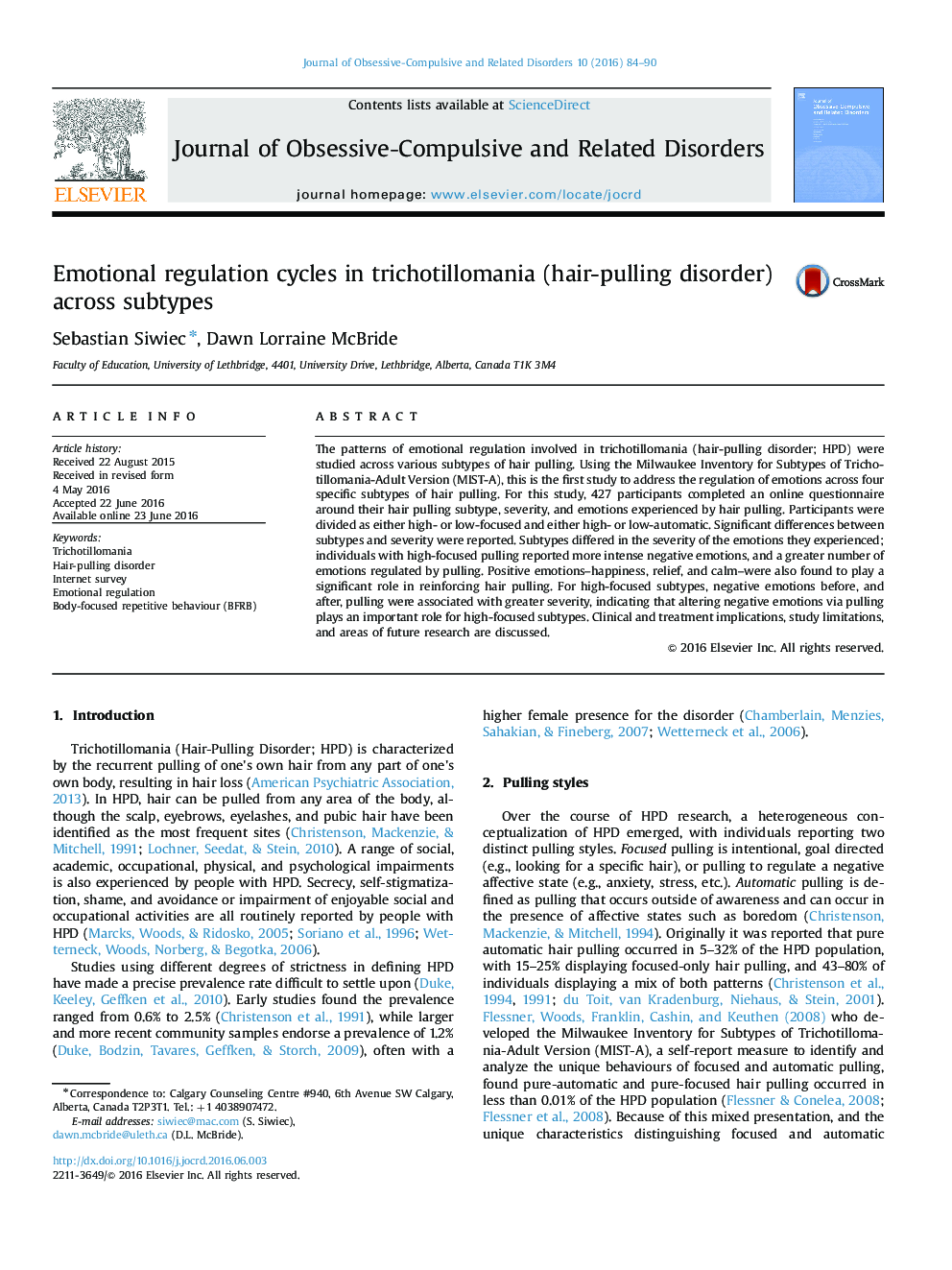| Article ID | Journal | Published Year | Pages | File Type |
|---|---|---|---|---|
| 912177 | Journal of Obsessive-Compulsive and Related Disorders | 2016 | 7 Pages |
•The emotional regulation in trichotillomania (hair-pulling disorder) was studied.•Significant differences between hair-pulling subtype and pulling severity was found.•Focused pulling had higher emotional component, and a greater intensity of emotions.•Treatment implications depend on the subtype presentation of hair-pulling.
The patterns of emotional regulation involved in trichotillomania (hair-pulling disorder; HPD) were studied across various subtypes of hair pulling. Using the Milwaukee Inventory for Subtypes of Trichotillomania-Adult Version (MIST-A), this is the first study to address the regulation of emotions across four specific subtypes of hair pulling. For this study, 427 participants completed an online questionnaire around their hair pulling subtype, severity, and emotions experienced by hair pulling. Participants were divided as either high- or low-focused and either high- or low-automatic. Significant differences between subtypes and severity were reported. Subtypes differed in the severity of the emotions they experienced; individuals with high-focused pulling reported more intense negative emotions, and a greater number of emotions regulated by pulling. Positive emotions–happiness, relief, and calm–were also found to play a significant role in reinforcing hair pulling. For high-focused subtypes, negative emotions before, and after, pulling were associated with greater severity, indicating that altering negative emotions via pulling plays an important role for high-focused subtypes. Clinical and treatment implications, study limitations, and areas of future research are discussed.
